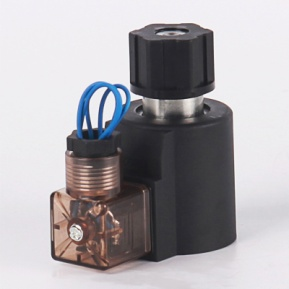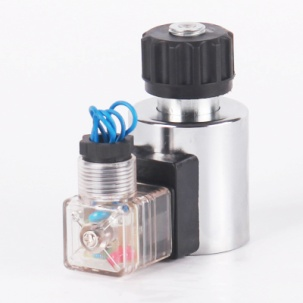Hexagon bolt trimming die, mold manufacturing process analysis M12 hex bolt trimming die manufacturing process is: forging shape y annealing y machining y quenching and tempering y wire cutting y mold assembly forming. The original mold of the factory was not forged, but was directly cut with rods of 55mm and 65mm. After hardening, two hardenings and 270e isothermal 3h for bainite quenching. The working part of the mold is exactly the center of the worst quality of the blank. The direction of fiber distribution in the mold is also very undesirable. This poor carbide distribution is difficult to improve by heat treatment. Therefore, although primary and secondary hardening are used, the effect is poor. An effective solution is to perform forging, breaking the carbides and evenly distributing them. Carbide distribution of the 55mm raw material (100@) In order to refine the carbide in the billet and evenly distribute it, two forging methods: one-way pull-out 0 and/three-way repeat pull-out are used. Carbide distribution of 65mm raw material (100@)(1) One-way drawing process raw material? 55mm, three hundred and three pulls on the 150kg air hammer, the total forging ratio is about 7, and two fire forging. The carbides have some accumulation and are still distributed in a strip shape, equivalent to 2153 grades, as shown in Figure 4, with an average service life of 50006,000 pieces. The carbide distribution of the mold after unidirectional forging (100@) (2) Three-way repeated drawing process raw material is? 55mm, two times of three-way repeated drawing on the 400kg air hammer, the forging ratio of each 镦 is 212215, the module carbide structure after forging inspection has slight directionality, the accumulation is not serious, equivalent to 115 See Figure 5. Some modules are small and uniform, that is, non-directional, and no accumulation, equivalent to level 1, see Figure 6.15 for the average die life of 16,000 pieces; level 1 die with an average service life of 20,000 pieces, and some Up to 35,000 pieces. After the three-way plucking, the carbide distribution of the mold (100@) 2. Metallographic analysis The metallographic specimen was cut after cutting the M12 hexagonal bolt trimming die, and the metallographic structure was observed with a 4XB metallographic microscope. Shown. Cr12MoV steel quenched by 1020e, 180e low temperature temperingFig.6 Three-way pulverized mold carbide distribution (100@)Fig. 7Cr12MoV steel mold quenched and tempered after the microstructure, the metallographic structure as the matrix is ​​tempered martensite, About 82%, white bulk is carbide, fine particles are secondary carbide, the amount of both accounts for about 15% of the total area, and a small amount of residual body accounts for about 3%. From the analysis of the organization, Cr12MoV steel The distribution of the medium carbide structure is uneven, which affects the performance of the trimming die, so that the hardness distribution of the trimming die is not very uniform. The highest hardness is HRC66 and the minimum hardness is HRC5715 by the Rockwell hardness tester. In particular, the hardness value measured at the edge of the trimming die is relatively high, so that it is more likely to collapse at the cutting edge. In summary, the uneven distribution of carbides is the main reason for the premature fracture of the mold. Forging and heat treatment, forging is the main means to improve the quality of the mold. Only after forging improves the carbide distribution. Heat treatment can play a bigger role. The three-way repeated drawing process is conducive to breaking the carbide in the center of the blank, and the one-way drawing process does not improve the carbide segregation in the central part of the module. Due to the imperfect pre-heat treatment, the carbide distribution in Cr12MoV steel is extremely uneven, and can not be improved by quenching and tempering. As a result, the performance of the Cr12MoV steel trimming die is deteriorated, thus affecting the performance of the trimming die. The trimming die is chipped due to the high hardness at the edge during use.
Solenoid coil is
integral in the operation of a solenoid
valve. It is what converts the electric current into a magnetic field which
in turn allows the operation of the solenoid valve. All our coils are listed
below however we do have a hyperlinked quick selection table to match our coils
and valves if you would prefer.
There are different types of solenoid coils as below:
2. Coil for Cartridge Valve
Solenoid Coil Solenoid Coil,Electromagnetic Coil,Automatic Solenoid Coil,Hydraulic Solenoid Coil Jinan Longli Hydraulic Device Co.,Ltd , https://www.longlihydro.com
